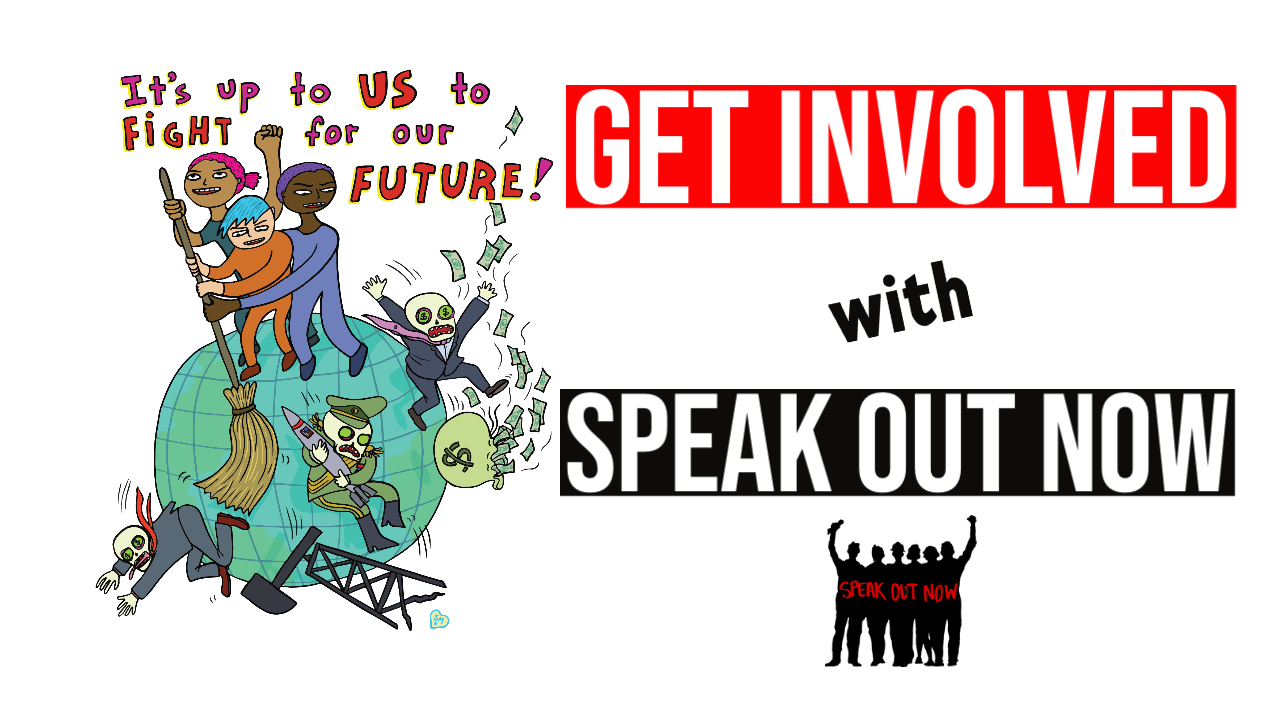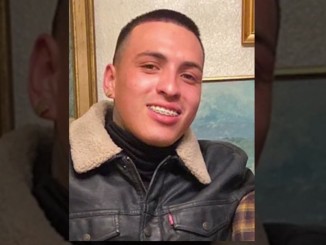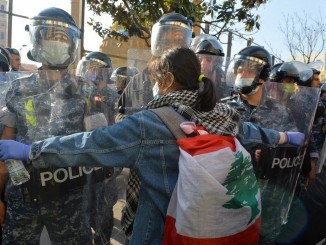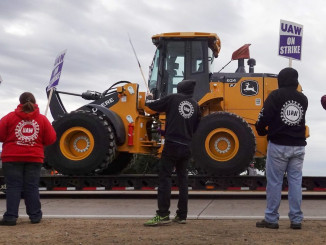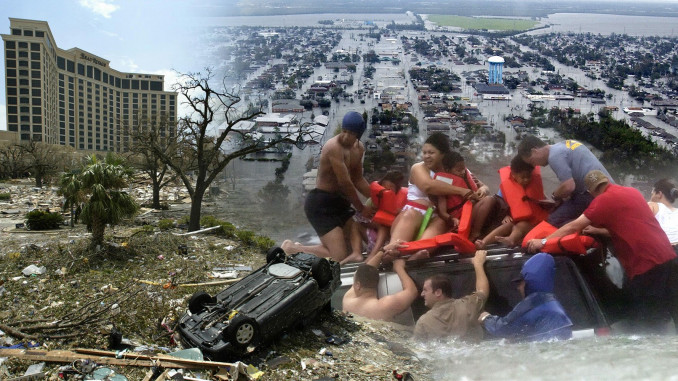
Twenty years ago today, on August 29, 2005, Hurricane Katrina slammed into the Gulf Coast of the United States, hitting the state of Louisiana and the city of New Orleans directly. The natural disaster slammed head on into the manmade problems of life under capitalism, and the effects became a human catastrophe. The destruction, suffering and death traumatized the region and much of the nation and world. It also gave us a glimpse of more tragedies to come, and who would suffer most.
As Hurricane Katrina came into contact with the Atlantic coast of Florida on August 25, 2005, it was only a Category 1 hurricane. Once it passed into the Gulf of Mexico, the unusually warm waters of the Gulf contributed to a rapid increase in the storm’s intensity. By August 28 it had become a Category 5 hurricane, with top wind speeds of 170 miles per hour. Once it became clear that the storm would be a dangerous direct hit, the city had less than two days to prepare. At first, some parts of the region and city were ordered to evacuate, while others were only advised to do so. It was only on Sunday, less than 24 hours before the storm would hit, that the mayor desperately called for a full mandatory evacuation. But there was no assistance for those who needed it. The most that was offered was the promise that buses would be sent into every neighborhood to take people to the Superdome, the football stadium in the center of the city.
Poor and Black New Orleanians left vulnerable
The only people who could actually evacuate were those who had a car and/or the money to travel, perhaps out of state, to stay with relatives or friends or in hotels where they would have to spend large sums of money on food and lodging. Of the approximately 500,000 residents of the city, more than 100,000 didn’t have the option to leave. Because of their lack of transportation, their age, their health, and of course their poverty, they simply couldn’t. About 12,000 chose to go to the Superdome before the storm, and at least 90,000 more remained in their homes and neighborhoods. The vast majority of those remaining in the city, both in their homes and in the Superdome, were Black.
This situation was predictable. Just one year earlier, the region had conducted a disaster exercise called Hurricane Pam. During that exercise, it was approximated that there would be 120,000 who would not be able to leave. City, state, and federal officials knew that these people would be stranded. In earlier decades, particularly the 1930s, New Orleans had lived through other devastating hurricanes that had flooded large parts of the city. And the Army Corps of Engineers, the government agency that had built most of the modern levees, had done their own studies that concluded that their own levees were not built well enough to hold up against a Category 5 storm.
Despite this knowledge, there was no organized large-scale evacuation planned, funded and ready to carry out by the institutions and people who control the economy and political structures of the city, the state, and the federal government. The people of New Orleans, especially poor and working-class Black residents, were left to fend for themselves.
Katrina hits
As the storm hit on the morning of the 29th, powerful winds knocked out electricity everywhere. They destroyed or severely damaged boats and small homes and did major damage to even well-built modern structures, where city officials had taken shelter, hoping to be safe. The Superdome itself lost parts of its roof. New Orleans and the Gulf Coast awakened Monday morning to major destruction.
At the same time, the massive storm surge pounded the levees around New Orleans, and the unstoppable force of the water eventually broke through. It was only as Monday morning wore on that it became clear that numerous levees had broken wide open, and that the flooding was only beginning. As the winds and rain of the storm died off, horrified residents watched the water rise, engulfing their cars and homes, and people realized that they would be fortunate to survive. Tens of thousands of desperate people struggled to escape the rising seas flowing through their neighborhoods and in their homes. Floodwaters rose by 2 feet per hour, and houses and entire neighborhoods were completely underwater by early afternoon. Thousands fled higher, into attics, onto roofs, even into trees. An estimated 80% of the city was underwater. Some people drowned in their homes and attics, unable to escape.
For an entire week, the city was paralyzed. Tens of thousands lived in squalid conditions in the Superdome and the nearby Convention Center, neither of which had electricity or working plumbing. Tens of thousands spilled over onto elevated highways where they baked in summer sun and heat. With no food or water for days, some people in desperation broke into stores and took food and other necessities. This was poor people, whose homes had been destroyed and without food for days, taking what they needed to survive.
Blaming the victims
Government officials and the media created and perpetuated false narratives and racist stereotypes about what was occurring. Reports of rapes and murders in the Superdome spread both by word of mouth, but also through the media and police sources. The Chief of Police claimed that “snipers” had shot at police helicopters. One television reporter reported that New Orleans was a “war zone out there… people are losing their minds.” National news media headlined their reports with words like “Chaos in New Orleans” and portrayed the city as out of control and filled with violence, either explicitly or implicitly blaming innocent victims.
In fact, according to survivors and local reporters on the ground, the situation was in many ways the opposite.
Despite waiting days in sweltering heat, on roofs, in the Superdome and convention center, tens of thousands were remarkably patient and calm. There were no confirmed reports of such rapes, murders, or even any real crime, beyond the obvious and understandable appropriation of food and other vital supplies. There was, however, evidence of vigilante violence by whites, especially against young Black men. In the Algiers neighborhood alone, there were reports of at 18 such murders, probably more, carried out by white cops and/or civilians.
Neighbors helping neighbors
In flooded neighborhoods, hundreds of people who had small boats swung into action. All volunteer. Throughout the city, particularly in Black neighborhoods, boaters rescued people off roofs, axed their way through roofs and into attics, and saved and then shuttled people over the waters to safety. Many of the boaters were from out of town, including many Cajuns from nearby towns and villages. They did so for days on end. Young people in the Superdome and Convention Center used carts to move sick people to where they could get help. Many began to act as custodians and went around cleaning up with shovels and rolling garbage cans. People took food from stores for their families and brought their takings back to their families and people near them in the Superdome, at the Convention Center, or on a highway with no shelter. Working-age people went without eating for days so that sick and elderly or children were able to eat and drink at least something. Given the immense suffering for approximately 100,000 people and, given their anger at what had just happened to them and how they were treated, they came together to support one another in thousands of small yet remarkable ways.
Trapped by the authorities
Nonetheless, because of the inaccurate narrative created by the media and many political leaders, from the federal government on down to the city police, a shift developed after the third or fourth day that there should be “zero tolerance” for looting and other supposed criminality, and that property should be protected. In this new rush to protect property, the tens of thousands in desperate need were casualties. National Guard troops rolled in, weapons visibly displayed, and there was open talk of martial law and shooting of “thugs.” This was the mentality of many in law enforcement as they entered the city on Thursday and Friday, three to four days after the hurricane and the initial flooding.
Police and National Guard troops patrolled and pointed guns at people. When desperate people tried to cross the bridge into neighboring towns that hadn’t flooded, heavily armed officials from those towns blocked off access, trapping tens of thousands in the city. In some neighboring towns, racist vigilantes beat and killed desperate Black people looking for help.
Beginning on Saturday, five to six days after the storm, buses finally began picking people up at the Superdome. They were brought to the airport and most were forced, some at gunpoint, onto planes. Most weren’t told where the planes might land, but were forced to board even if they had relatives or friends elsewhere in Louisiana who could help them. Many didn’t know if their families were dead or alive. Hundreds of thousands of Louisianians, most Black, were scattered to towns and cities in more than a dozen states. Some eventually made their way back, but many chose or had little choice but to stay where they had been transported against their will.
Although there are even today conflicting estimates of the storm’s death toll, the official toll and something at least close to the truth is 1,392 dead in New Orleans alone. Hundreds of those died by drowning, dozens died because of direct blunt trauma, while hundreds more died of disease and the effects of heat, stress and age in the coming days. Dozens were shot and killed either by police or vigilantes.
The roots of catastrophe
Hurricane Katrina was a natural disaster that would have killed many and destroyed lives all on its own. What caused this natural catastrophe to be so deadly and become the human tragedy that it was?
In the decades leading up to Katrina, Louisiana had lost at least one million acres of coastal wetlands that had previously buffered the city from the worst of storms and storm surges coming from the Gulf. This loss was largely the consequence of oil and gas drilling and production in the region. This unceasing (and still continuing) development of fossil fuel production had rapidly destroyed the natural ecosystems that once protected the city and coastal inhabitants from the worst storm surges.
A heating world created warmer ocean and sea level temperatures, increasing the fuel that generates more intense, larger hurricanes and rainstorms. The same fossil fuels that have destroyed the wetlands have also heated our world as a whole. Fossil fuel companies continue to dominate the politicians of Louisiana, the U.S., and most of our world, and have continued their destructive practices even though the consequences have been staring us in the face. These supercharged storms, of which Katrina was one of the first examples, have now become a regular occurrence.
Not only did the capitalist drive for profit help create the storm and degrade the natural environment that might have lessened its effects, the inequalities of capitalism also played a role in who suffered and how much.
Much of New Orleans itself is a few feet below sea level. But because of its prime location for trade and commerce, it became a key city and boomtown for the slave economy of the early southern United States. Despite being below sea level, over the centuries engineers built a series of canals and levees to hold back the Gulf and Lake Pontchartrain, slowly creating the levee system that failed during Hurricane Katrina. This attempt to control and manage nature had benefits, but also allowed a large population to live in a potentially deadly location vulnerable to natural disaster. There had been other bad hurricanes in New Orleans’ past, and the threat was well understood.
Poverty caused by the exploitation of the system and centuries of racism combined to box the poorest segments of the Black population into the most vulnerable areas, often right along the sides of the levees that failed. Neighborhoods like Treme and the 7th, 8th and 9th Wards were predominately Black neighborhoods, largely poor and working-class, at or below sea level and bordered by levees. Due to centuries of racism and then systematic, state-sponsored redlining in the mid-20th century, they were concentrated in areas that would be hit first and hardest by floodwaters.
The response from the city, state, and federal governments was disastrous but predictable. Not only had nothing been done to move people out of harm’s way before the storm hit, there had been little preparation for the aftermath. Tens of thousands of people lived in a Superdome without plumbing or electricity. Tens of thousands more lined the streets and highways around the Superdome and downtown Convention Center. There was no food, no water, no basic human infrastructure. For days, there were rumors that hundreds of buses would come to evacuate people. These came only after immense human suffering.
The over 400 years of the unique and vicious racism in the European colonies and then the United States also played a role. In New Orleans, that racism encouraged white people and the larger society to view Black residents as criminals, and to view their attempts to merely survive as crimes. It also allowed government officials in both Washington, D.C. and Baton Rouge, Louisiana’s capital, to ignore the desperate need of those suffering and focus their attention instead on what they considered a breakdown of law and order: small property crimes, mostly the looting of food. This racism, a product of long centuries of oppression and exploitation, played out in and around New Orleans following Katrina.
Hurricane Katrina was a natural event, and brought all the destruction that many natural disasters can bring. It was catastrophic. But the worst effects of the storm, and its long aftermath, did not have to happen.
Aftermath
Of the billions of dollars in funds that were dedicated to rebuild New Orleans in the following years, that money went first to restore the French Quarter and the Superdome where the sporting events, casinos and profitable tourist industry prevail. Instead of repairing desperately needed public housing, the city government tore it down so real estate developers and bankers could develop upscale housing.
Since Katrina, the population of New Orleans has fallen by twenty percent. The business class of New Orleans has worked to attract young professionals, middle managers and more capitalists themselves to the city – mostly white. At the same time, the city has done almost nothing to restore the homes and bring back displaced working-class residents – mostly black. The total white population has remained nearly the same as before the hurricane. But the Black population has declined significantly, from 326,000 before the storm (67%) of the city’s population, to 233,000. In the Lower Ninth ward, a predominately Black neighborhood, only about 5,000 of the 14,000 residents living there before Katrina have returned.
But there is another story. Local people fought back in the days, weeks, months, and years following the storm. They organized to clean up and rebuild. Local organizations outside of government and without much money have done whatever they could to address the emergency and restore their communities. They adapted existing community organizations to meet the challenge and built new ones to move forward. Immediately after the storm, thousands of volunteers from around the country, many of them college students, came to New Orleans to help in any way they could. Many went to Houston and other places where evacuees were concentrated. Some in New Orleans stayed to assist the rebuilding. Thousands fought to keep hold of their homes and businesses and struggled over many years to rebuild. Thousands attended citywide meetings to fight the condemnation of homes and entire neighborhoods as well as larger gentrification schemes. The bedrock of this fightback was the local culture of New Orleans and its environs – people, their traditions from centuries of history, and their celebrations of community.
Hurricanes are naturally occurring events, recently aggravated by accelerating climate change. But there was nothing natural about how rapidly Hurricane Katrina became the human catastrophe that it was, and who was hurt most by its forces.
Twenty years later, our world is still shaped by these same forces. They have now done twenty years more damage to our planet and have made worse many of the human crises that existed before 2005. The devastation of Hurricane Katrina offers us an eye-opening glimpse into our worsening future. But it also reminds us of the potential of oppressed and exploited people to come together in the face of catastrophic hardship.
We know that we will face worsening catastrophes and crises in the coming decades. But we also know that we have the ability to organize ourselves and fight for our needs. It is this knowledge that we must draw on as we face that future.
Two powerful visual narratives of Hurricane Katrina and its effects on New Orleans and its people offer a good overview and lots of detail. The first is Spike Lee’s When the Levees Broke, a passionate 4-part documentary made soon after the events, in 2006. A more recent 5-part documentary from National Geographic and Hulu, “Hurricane Katrina: Race Against Time,” offers some of the same detail, with newer interviews and a longer perspective. At least some of it is available for free here, the remainder can be found on Hulu.

